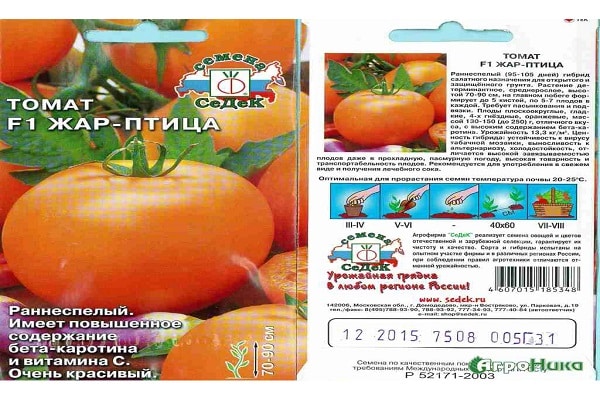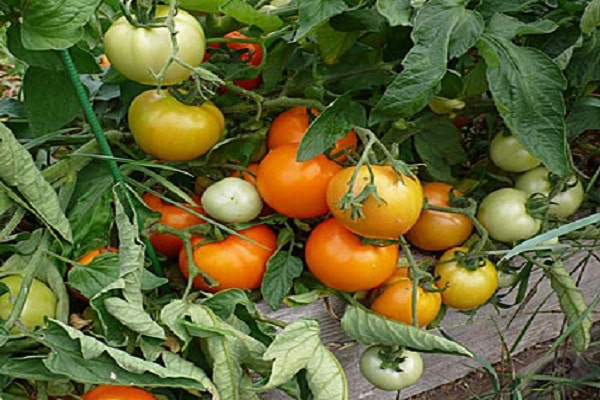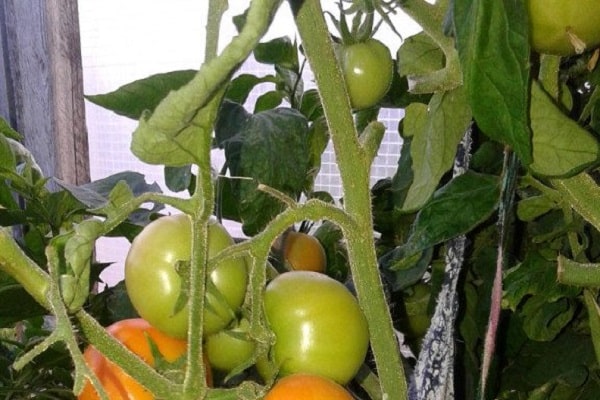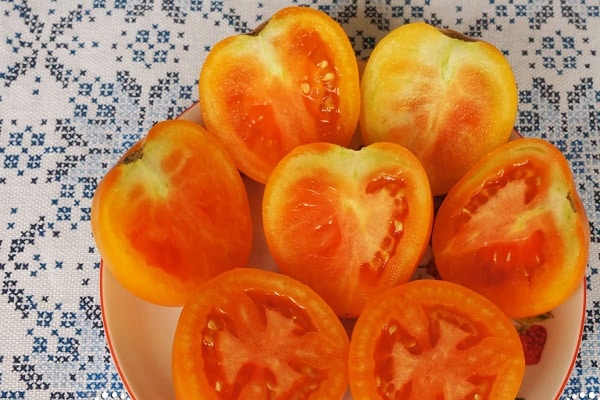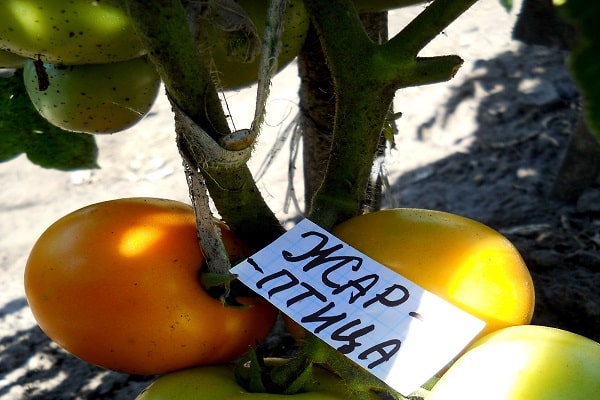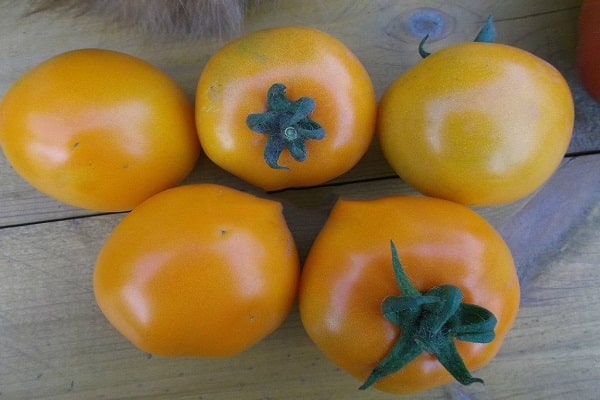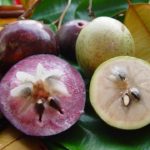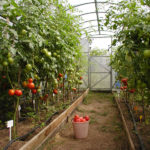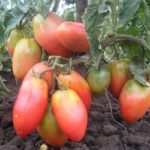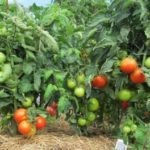The Firebird tomato is a cold-resistant hybrid that was bred by Siberian breeders. These tomatoes have high taste and a whole range of vitamins. They are hypoallergenic, and tomatoes contain more beta-carotene than any red fruit. Gardeners who grow Firebird are especially pleased with the yield.
Description of the plant
This hybrid is considered early ripening, since ripening begins 100 days from plant germination. It is universal - this tomato is grown both in greenhouse conditions and in open ground.
Tomato plants grow from 0.7 to 0.9 meters, have spreading branches and a large mass of leaves. They need to tie the bushes to the trellises, form them into 1–2 stems, and timely remove side shoots and lower leaves. Up to 5 fruit clusters are left on the main shoot. This hybrid has up to 7 tomatoes on each of them.
The first fruit cluster grows after the sixth leaf. The next ovaries are located every couple of leaves.
Seedlings are hardened off before planting. It is optimal to place 5 plants on each square meter of land. Firebird tomato bushes are not tall, so they are sometimes planted very compactly, and this does not affect fruiting. In greenhouse conditions, Firebird tomato bushes can produce up to 13.5 kg per 1 m2 fruits
Fruit characteristics
The fruits have a smooth orange skin that is not prone to cracking. They are round in shape, fragrant, with a small number of seeds. These vegetables have an original taste and are primarily suitable for eating fresh, as well as for canning and pickling. Juice made from Firebird tomatoes is also very tasty and healthy, because they contain a high content of ascorbic acid and beta-carotene.
The fruits of the Firebird f1 tomato grow weighing from 130 to 150 grams. Sometimes the size of tomatoes reaches up to 250 g.
The fruits from one bunch reach at different times, and they are also easily separated from the stalk. Those vegetables that have not had time to ripen have a pale green tint to the fruit. The peculiarity of these tomatoes is that you can pick them all together: bright orange vegetables, and those that are paler, and green ones, if necessary. Unripe fruits acquire their color over time; they contain useful substances in the same quantities as vegetables picked ripe.
Advantages of a hybrid
The requirement of this plant for timely staking and formation (stepping) is not considered a disadvantage. These operations on bushes should always be carried out if they, like the Firebird tomato, have spreading branches and many leaves.
This hybrid has a number of advantages:
- resistance to tobacco mosaic and Alternaria;
- unpretentiousness and cold resistance of the variety;
- fruits set even in cool weather;
- presentation and transportability;
- the use of fruits not only for culinary purposes, but also for treatment and diet;
- long-term storage of tomatoes;
- the possibility of extended harvesting - ripe and technically ripe fruits are picked together;
- in the absence of abundant watering, the amount of harvest is not reduced.
Caring for the Firebird tomato hybrid is easier, thanks to the plant’s loyalty to non-ideal growing conditions.
Reviews from gardeners
Roman, 42 years old, Samara:
“We have been planting the Firebird tomato for several years now - we really like it, as it has an excellent taste. He made us happy this year too: the harvest was excellent.”
Yulia 29 years old, Rostov region:
“Siberian Firebird tomatoes leave no chance of being left without a harvest. They grow in both heat and cold! So delicious!”

